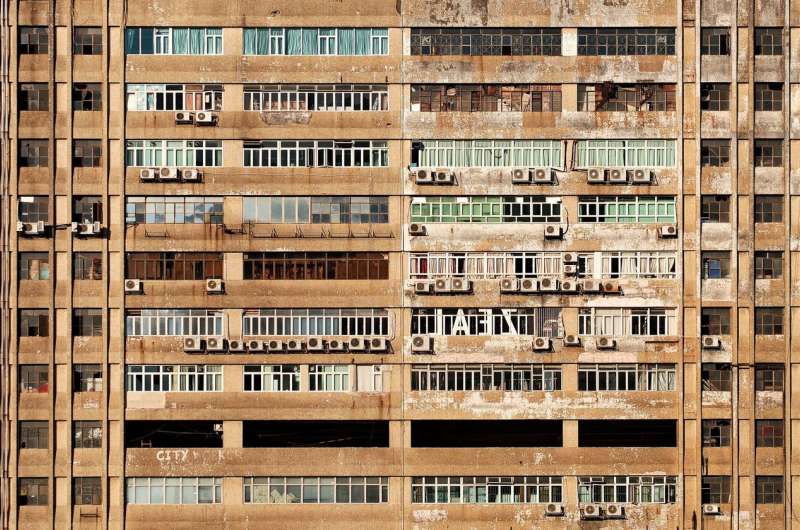Urban heat makes people sedentary, passive and lonely

Researchers from Western Sydney University have investigated the effect of rising temperatures on the liveability of cities. They found that an over-reliance on air-conditioning and lack of cooling elements in public outdoor areas are leading to sedentary lifestyles and social isolation.
The research drew on the findings of a transdisciplinary pilot study called Cooling the Commons, and interviewed groups of residents in Western Sydney to find out how they keep cool in extreme heat. They asked how vulnerable groups including the elderly, mothers with young children and carers would like to see their communities improve as summers are getting increasingly hotter.
Dr. Louise Crabtree from the Institute for Culture and Society, says that when summer temperatures soar, liveability is compromised, especially for those who don't have access to, or can't afford, air-conditioning.
"The capacity of individuals and communities to cope with urban heat is determined by housing design, housing tenure arrangements, the design of public spaces, social networks, and everyday material circumstances," she says.
"We could see how the lack of shaded and other cool public spaces is forcing an increasingly sedentary lifestyle. One group of participants told us how their children in childcare are not allowed to play outdoors after mid-morning due to the lack of shade. School-aged children come home straight after school, rather than riding their bikes, to 'just chill.'"
The report found that indoor shopping centres and fast-food restaurants are the only major sites of cooling and recreation for many residents in Western Sydney.
"Another group described being completely reliant on air-conditioning and confining themselves to particular rooms in their homes during hot days. This can lead to social isolation with single-occupant dwellings on the rise in Australia," Dr. Crabtree says.
Aircon's unforeseen consequences
The researchers say that with air-conditioning now the primary response for keeping cool, the provision of outdoor infrastructure such as shade, shelter, public water and places to comfortably rest and wait during summer has been neglected.
"New houses in Western Sydney, as all around Australia, are being designed around air-conditioning to deliver thermal comfort," says Dr. Crabtree.
"This leads to a perceived need for less publicly accessible infrastructure, which then exacerbates the problem. The sobering reality we confront is an Australia where 50-degrees summer days may become a normal event in Sydney by 2040, sooner in other metropolitan areas."
"Reliance on air-conditioning increases the demand for fossil fuel derived energy which is contributing significantly to global warming, people are being driven indoors to individualised social spaces, and household energy bills soar. This also has implications for households that either can't install air-conditioners or afford to run them."
The researchers call for governments to consider alternative ways to deal with the heat and to listen to the voices of residents in designing adaptive environments.
Recommendations for cooler and more social communities
- Invest in shared, multipurpose infrastructure such as libraries, hospitals, schools, swimming pools and community centres which are open to circulation of air and people, and in accessible public transport systems to these places
- Community gardens can reduce radiant heat effects and facilitate learning communities
- Community cook-out is a way to share knowledge and enjoy social interaction in a local setting outside of a hot house at the end of a hot day
- Prepare a community weather preparedness plan, similar to plans for bushfires and other natural disasters
The Cooling the Commons pilot project investigated how western Sydney residents keep cool during the hottest parts of the year and how they would like to see their living environments modified to improve wellbeing in a climate changing world. Researchers were Dr. Abby Mellick Lopes, Dr. Louise Crabtree and Professor Katherine Gibson from the Institute for Culture and Society (ICS), and Emeritus Professor Helen Armstrong from QUT. That research has led to an ongoing research program with Dr. Stephen Healy, Dr. Emma Power and Vanicka Arora (ICS) and Professor Cameron Tonkinwise (UTS) joining the original team.
Research from the project has recently been published in Human Ecology Review.
The current phase of this research is developing a pattern book that will guide better urban design in western Sydney in partnership with Landcom.
More information: Abby Mellick Lopes et al. Infrastructures of Care: Opening up "Home" as Commons in a Hot City. Human Ecology Review: Volume 24, Number 2. press-files.anu.edu.au/downloa … s/n4974/pdf/book.pdf
Provided by Western Sydney University





















